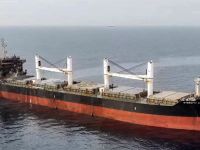Seismic surveying is a means of photographing the sub-surface using sound instead of light. Three-dimensional mapping of this kind has become 10 times more efficient in recent years.
While it would have taken as long as 12 months to shoot seismic over 500 square kilometres two decades ago, this area can be covered in roughly a month today.
Costs have also more than halved during the 1990s. While Statoil paid about NOK 80 000 per square kilometre for survey work in 1992, the price today is around NOK 30 000.
But the principles are the same as when marine seismic surveying began off Norway in the 1960s. Using a ship, hydrophone streamers and a seismic source, the aim is to find and map new hydrocarbon fields.
"This technique plays a key exploration role," explains Erik Hهvarstein. He and Svein Arne Tonning, two of Statoil's experts on seismic data acquisition, have worked in this area for years.
"Seismic" derives from the Classical Greek word seismos, which means earthquake or tremor. Put simply, that is just what happens during one of these surveys.
At sea, compressed air is used to generate shock waves which penetrate deep into the Earth's crust and are echoed - reflected - back from rock layers of different composition and density.
The varying echoes from these formations are picked up by sensitive hydrophones attached to a series of long cables - streamers - towed behind the survey ship.
These data are then processed to create seismic images for storage on magnetic tape. Geologists and geophysicists finally interpret these images to determine whether oil and gas might be present.
The starting point for a seismic survey, whether on land or at sea, is the energy source which creates the sonic shock wave, Messrs Tonning and Hهvarstein explain.
This normally comprises a set of individual sound sources which are discharged simultaneously. In a marine survey, an array of air guns will be towed five-six meters beneath the surface.
The guns contain compressed air at a pressure of 140 bar, which is released at set intervals to create pressure waves which propagate into the sub-soil.
"Dynamite was also used as a source in the early days of marine seismic," explains Mr. Tonning. But compressed air became more and more usual from the late 1970s.
A hydrophone streamer can be 3-6 000 meters long and is submerged about seven-eight meters below the surface. Modern survey ships will tow six to 12 of these cables, which are 100-150 meters apart.
From a bird's eye perspective, it might seem that the ship is towing a huge football pitch. But a seismic spread covers roughly 1 000 such pitches.
One streamer can carry 240-480 hydrophone groups or channels to register the seismic echoes - in other words, one group per 12.5 meters.
So a domestic stereo, with its meager two channels, hardly bears comparison with a seismic array. But then the reflected signals are relatively faint, with frequencies from 100-150 Hertz.
Calm conditions help the hydrophones to pick up these weak signals, because any heavy motion of the sea can create disruptive noise. So seismic surveys off Norway are usually conducted in the summer, when the weather is at its best.
However, the climate in other offshore provinces around the world - such as western Africa, Brazil and the Gulf of Mexico - permits seismic to be shot throughout the year.
A survey continues around the clock. The ship navigates with the help of satellite positioning, while compasses on the streamers make it possible to fix where all the hydrophone groups are.
Seismic work is a time-consuming business. Once the data have been gathered, they can take 20-30 weeks to process - depending on the size of the survey.
Initial processing often takes place on the ship, which means the job can be completed in three to 10 weeks. Data are stored on magnetic tape as images which form the basis for seismic maps.
This information is a raw material, with little value until it has been interpreted. That process can take several months, even with computers doing much of the basic analysis.
But no machine can match the human ability to evaluate and combine data with experience and "gut feeling", says Mr. Hهvarstein. So geoscientists are essential in the interpretation process.
Statoil and other operators on the north-west European continental shelf have taken the lead for years in developing new and more cost-effective marine seismic survey techniques.
"We've acquired larger ships which can tow more and longer streamers, and bigger computers able to process greater volumes of data," Mr. Hهvarstein explains.
An oil company contracts with a specialist survey company to collect seismic data over an area where hydrocarbons could be present.
If little previous exploration has been done in these waters, the first step is to compile a fairly generalized map of the sub-surface using two-dimensional seismic.
This approach means that the vessel tows a single streamer and much less data are collected as the basis for two-dimensional profiles of underground formations.
Competition for seismic work off Norway is tough at a time when oil prices are low and exploration budgets have been cut. Western Africa and Brazil are the hottest markets at the moment, while US Gulf jobs have declined after a boom in 1998.
To keep their vessels in work, contractors can opt to collect data on a speculative basis at their own expense, and then sell this "library" to oil companies.
Such multi-client surveys are usually carried out in unlicensed areas which might become interesting for exploration at a later date.
A further development of the technique in recent years has been dubbed four-dimensional seismic, with time as the fourth dimension.
This involves doing surveys of offshore fields at different periods in order to track the movement of hydrocarbons through their reservoirs.
Statoil has had great success with four-dimensional surveys on its Gullfaks field in the Norwegian North Sea.
While it is sometimes possible to identify hydrocarbon accumulations directly from a seismic map, such charts generally fail to provide a clear picture of where oil and gas might be concealed.
So the sub-surface continues to hide many secrets which seismic surveying cannot penetrate - and drilling remains the only way to confirm whether or not petroleum is present in an area.
Source: STATOIL.COM
© 2000 Mena Report (www.menareport.com)







